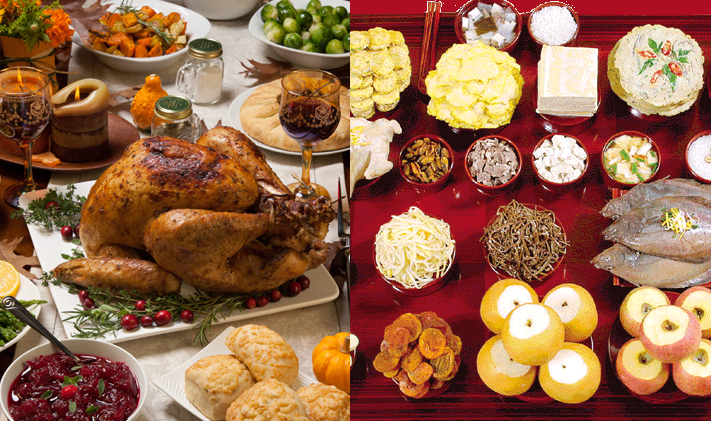Thanksgiving in January
/On a bitterly cold January morning, I set out to teach a visiting Korean middle-school group during their winter break. They were housed dormitory style in a weathered Victorian house in Flushing, Queens. Had my NY students been sent to equally dilapidated lodgings their mommies would be on the first flight into Gimpo International to rescue them. But these Dae Han Min Gook sons and daughters were intrepid. They laughed at the faulty wiring, made faces at the food and piled their coats over their blankets when the icy winds stormed the window jambs.
They were both polite and patient as I stumbled through my mind’s rolodex of Korean words and phrases. When I brought them little gifts from my home (all made in China), they thanked me profusely. It was a teaching job from Heaven. Each morning, when I asked what they had for dinner the night before, they described their lasagna, or tacos with the same words, “It was delicious!” After the third day with them, I realized it was what they were instructed to say—no matter what.
“I’m a good cook.” I assured them. “Are there American foods you’d like to try? I’ll make it for you.” One girl asked for lamb. It’s important to note that while I am, by all accounts, a good eater, I don’t eat sheep in any form. In my culinary opinion, lamb smells like a boy’s bedroom. (I apologize to all lamb lovers.)
I can, however make a fabulous lamb for other people. Armed with lemons and olive oil, rosemary and lots of garlic, I brought my roast lamb to school. “It’s delicious!” the students cheered. By then, their adjective had lost its power, but I was cheered on by their clean plates.
As soon as they tossed their paper goods into the trash, a boy clamored for food he had only seen on American TV and film; turkey. He pronounced it churkey, which so charmed me, I agreed in an instant.
I taught a short lesson on pilgrims and religious freedom, but spent two days on the majesty of Thanksgiving meals. “No matter what country Americans come from, we all stop and give thanks for the opportunities and abundance we enjoy here.” I began. “Some recent Americans, just like you have never eaten turkey, but they prepare one as best they can to become part of their new extended family. So, while my table has creamed onions and sweet potato casserole, my neighbors may have baked ziti, spaeztle, bulgogi or collard greens. But just like your home, the guests are family and friends from the tiniest babies to the very oldest.” I continued to share my memories of donating free turkeys to our fire house and how my Grandma invited families who couldn’t afford the celebration. The children couldn’t get enough of the stories and had a giggle when I added, “Did you know your holiday, Chuseok is translated to Thanksgiving on Korea drama sub-titles? The first time I saw a Chuseok-Thanksgiving scene on television, with all the peeled apples and burning incense, I wondered where the turkey was!”
After class, I drove straight to my supermarket for the bird. While lamb is available year-round (for a king’s ransom), turkey in late January can be harder to find than hen’s teeth (pardon the pun). I now admit, I bought an oven stuffer chicken.
While my balsamic glaze may have been more piquant than their moms’ 삼계탕, they ate every morsel.
On our last day together, the boy who requested churkey gave me a set of Hanyeoyo bowls his mom designated for his favorite American teacher.
That January, I was a teacher who had written one novel called Bird and Fish. I’m a writer who has published three books now. They were middle-schoolers far from home. They’re taller and wiser high-school students now. But, even as the remembrances fade, the sharing of American Thanksgiving is still more delicious than eating turkey.

